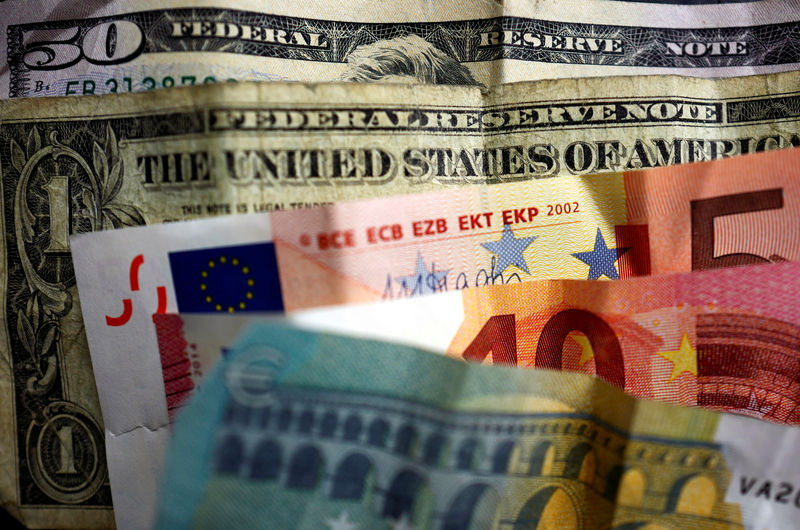- USD/CAD strengthens as the US Dollar appreciates due to optimism surrounding the Trump trades.
- The implementation of US President-elect Donald Trump’s proposed fiscal policies could delay further rate cuts by the Fed.
- The commodity-linked CAD weakens as Oil prices decline following OPEC’s lowered forecast for global Oil demand growth in 2024.
USD/CAD moves upwards for the fourth successive session, trading around 1.3960 during the early European hours on Wednesday. The primary factor contributing to the recent weakness in EUR/USD is the strength of the US Dollar (USD) amid optimism surrounding the Trump trades.
The implementation of US President-elect Donald Trump’s proposed fiscal policies could stimulate investment, increase government spending, and bolster labor demand. However, this surge in economic activity could also fuel inflation risks.
On Tuesday, Minneapolis Fed President Neel Kashkari affirmed that the central bank remains confident in its ongoing battle against transitory inflation but cautioned that it is still too early to declare full victory. Kashkari also noted that the Fed would refrain from modeling the economic impact of Trump’s policies until there is greater clarity on the specifics of those policies.
The decline in crude Oil prices continues to weaken the commodity-linked Canadian Dollar (CAD). Notably, Canada remains the largest Oil exporter to the United States (US). As of this writing, West Texas Intermediate (WTI) Oil trades near $68.00. Crude Oil prices fell after the Organization of the Petroleum Exporting Countries (OPEC) reduced its forecast for global Oil demand growth in 2024.
With a quiet economic calendar in Canada this week, the Loonie Dollar is taking a backseat to the Greenback. Traders are now turning their attention to the upcoming US inflation data release on Wednesday, which could provide more insight into future US policy.
Canadian Dollar FAQs
The key factors driving the Canadian Dollar (CAD) are the level of interest rates set by the Bank of Canada (BoC), the price of Oil, Canada’s largest export, the health of its economy, inflation and the Trade Balance, which is the difference between the value of Canada’s exports versus its imports. Other factors include market sentiment – whether investors are taking on more risky assets (risk-on) or seeking safe-havens (risk-off) – with risk-on being CAD-positive. As its largest trading partner, the health of the US economy is also a key factor influencing the Canadian Dollar.
The Bank of Canada (BoC) has a significant influence on the Canadian Dollar by setting the level of interest rates that banks can lend to one another. This influences the level of interest rates for everyone. The main goal of the BoC is to maintain inflation at 1-3% by adjusting interest rates up or down. Relatively higher interest rates tend to be positive for the CAD. The Bank of Canada can also use quantitative easing and tightening to influence credit conditions, with the former CAD-negative and the latter CAD-positive.
The price of Oil is a key factor impacting the value of the Canadian Dollar. Petroleum is Canada’s biggest export, so Oil price tends to have an immediate impact on the CAD value. Generally, if Oil price rises CAD also goes up, as aggregate demand for the currency increases. The opposite is the case if the price of Oil falls. Higher Oil prices also tend to result in a greater likelihood of a positive Trade Balance, which is also supportive of the CAD.
While inflation had always traditionally been thought of as a negative factor for a currency since it lowers the value of money, the opposite has actually been the case in modern times with the relaxation of cross-border capital controls. Higher inflation tends to lead central banks to put up interest rates which attracts more capital inflows from global investors seeking a lucrative place to keep their money. This increases demand for the local currency, which in Canada’s case is the Canadian Dollar.
Macroeconomic data releases gauge the health of the economy and can have an impact on the Canadian Dollar. Indicators such as GDP, Manufacturing and Services PMIs, employment, and consumer sentiment surveys can all influence the direction of the CAD. A strong economy is good for the Canadian Dollar. Not only does it attract more foreign investment but it may encourage the Bank of Canada to put up interest rates, leading to a stronger currency. If economic data is weak, however, the CAD is likely to fall.













